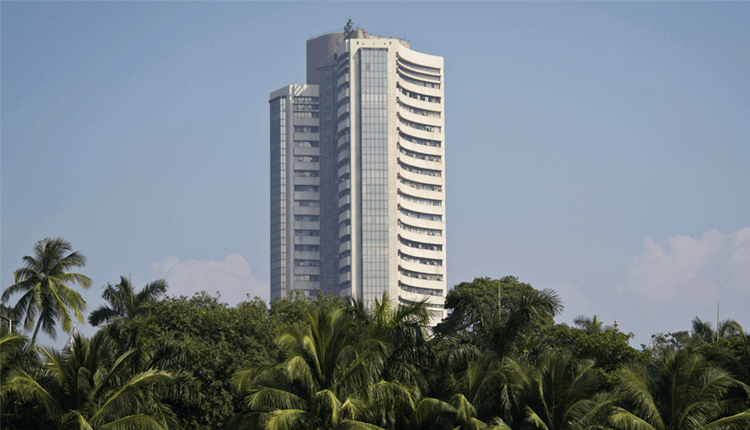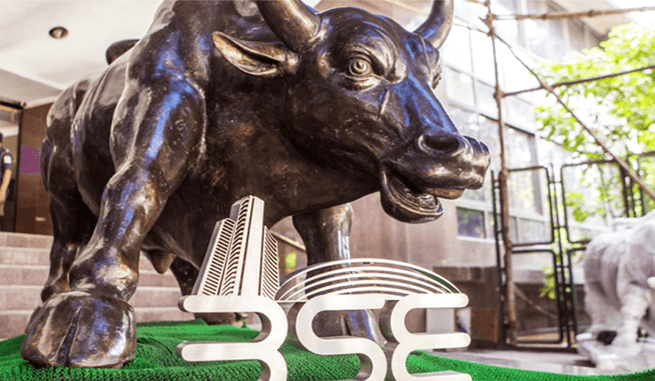Best Shares To Buy For Short Term In October 2019
Oct 09, 2019 | 12:34 PM IST
Oct 09, 2019 | 12:34 PM IST

In general, Short-Term investments are considered to be riskier than long term investments. But, short-term investments are important for making more profit from cash savings or liquid assets. Below were the best stocks to buy in July 2019, read Best Short Term Stocks To Buy Today if you are looking to buy shares today.
Abbott India Ltd(NSE: ABBOTINDIA) (Share Price: Rs.9150): Potential Buy
Valuation:Over-Valued stock with TTM PE of 40x.
Reasons to Consider: In Q1FY20 company has posted good quarter with 18% rise in revenue to Rs 998.9 cr YoY mainly due to strong growth in key therapies and power brand. PAT zooms 42% to Rs 117 cr whereas, EBITDA grews 56% YoY to Rs 147.2 cr and EBITDA margins improved 426bps YoY to 17.4% which was mainly improved due to better improved operational leverage. The domestic pharma industry is expected to grow in the range of 9-11% per annum. Issues such as NLEM and other regulatory aspects are mostly in the price. On the flip side, the looming threat of Jan Aushadhi and trade generics are some headwinds at this juncture. However, we continue to believe in Abbotts strong growth track in power brands and the capability of new launches on a fairly consistent basis (100 products in the last ten years).
Key Drivers: The domestic pharma market (Rs 1.3 trillion AIOCD MAT July 2019) is growing at 9-10% YoY. Branded generics dominate the pharmaceuticals market, constituting nearly 80% of the market share in terms of revenue. Abbott Indias top five brands have together registered a revenue CAGR of 20%, leading combined contribution to Abbott Indias sales to grow from 26% in March 2015 to nearly 34% in March 2019. Thus, it is evident that revenue growth has been driven by top brands (power brands) despite one of its top brands (Thyronorm; thyroid) being under price control (NLEM). We expect future launches of new products from its various divisions (womens health, GI, metabolic, CNS, multi-specialty, vaccines and consumer care), along with brand extensions and access to innovative molecules from global parent to drive growth. Abbott India is a debt-free company and has seen its core RoEs improving from 42.6% in FY14 (adjusted to 12 months) to 116.3% in FY19. Continued new product launches, volume led growth in Abbott Indias top brands and intermittent price hikes in its portfolio provide comfort on overall financials. The company has maintained dividend payout in the range of 30% in the past four years with cash/share of Rs 793 in FY19.
Financial: In Q1FY20 Net Revenue at Rs 998.89 cr Vs Rs. 844.92 cr in Q1FY19 up 18.22%. Net Profit at Rs. 116.94 crore in Q1FY20 up 41.92% from Rs. 82.4 crore in Q1FY19, whereas EBITDA stands at Rs. 203.78 crore in Q1FY20 vs Rs. 133.11 crore in Q1FY19 up 53.09%.
Petronet LNG Ltd(NSE: PETRONET) (Share Price: Rs.263): Potential Buy
Valuation: Fairly-Valued stock with TTM PE of 18x.
Reasons to Consider: Petronet LNG Limited in QFY20 registered a revenue decline of 6.1 reaching Rs 8,613 cr. PAT came in at Rs 560 cr vs Rs 587 cr for the same period last year. EBITDA margin came in at 11.9% (+170bps) YoY helped by lower costs and improved product mix. LNG volume increased by 10.2% YoY to 226 TBTUs in Q1FY20 vs 205 TBTUs in Q1FY19. During Q1FY20, Dahej terminal had capacity utilization of around 112% and processed around 217 TBTUs of LNG against 199 TBTUs in Q1FY20 and 214 TBTUs in Q4YFY19. In recent concall it has told that it achieved highest-ever quantity of LNG in a quarter at 217 TBTUs after the expansion of plan from 15 to 17.5 MMTPA, Dahej LNG terminal achieved yet another milestone with its capacity expansion and they have recognized right to use assets and corresponding lease liability of Rs 3,829 cr as on April, 2019.
Key Drivers: With growing energy consumption in line with GDP growth rate of the country and as the GOI aims to significantly increase Natural Gas share in the market. The total demand for gas across different sectors is expected to increase to 654 MMSCMD by FY2026-27. Also Dahej terminal in Gujarat meets 40% of Indias gas requirements and around 75-80% of LNG import in the country. The current low spot price environment should support the governments plans to bring about major reforms in the domestic gas consumption space, including the revival of gas-based power plants. This coupled with the weaker competition, would aid continued higher utilizations for the company. PLNG has signed MOUs with GUJGA and IGL to set up LNG gas dispensers in their respective GAs. Also, the company is in talks to set up 10-20 LNG gas dispensers at OMCs retail outlets. PLNG is in preliminary talks for US LNG project and expects to look for avenues of down-streaming the volumes too. This may be in participation with other Indian firms.
Financial: In Q1FY20 Net Revenue at Rs 8613 cr Vs Rs. 9169 cr in Q1FY19 down 6.1%. Net Profit at Rs. 560 crore in Q1FY20 down 6% from Rs. 587 crore in Q1FY19, whereas EBITDA stands at Rs. 1024 crore in Q1FY20 vs Rs. 934 crore in Q1FY19 up 9.6%. EBITDA Margins up 170bps to 11.9% in Q1FY20 vs 10.2% in Q1FY19.
Zydus Wellness (NSE: ZYDUSWELL) (Share Price: Rs.1430): Potential Buy
Valuation: Fairly-Valued stock with TTM PE of 35x.
Reasons to Consider: Zydus Wellness Limiteds (ZWLs) Q1FY20 results are not comparable YoY due to the consolidation of the acquired Heinz portfolio. ZWLs base portfolio grew by 10% while the Heinz portfolio grew by 20% in Q1FY20. OPM stood strong at about 20%. The management has indicated at a sustained double-digit growth on a comparable basis and a 200 bps improvement in OPM in the next two years. The Heinz Portfolio grew by 20% due to seasonality factor (Q1contributes 30% to overall sales). Heinz portfolio gained market share (Glucon D - 51 bps, Nycil 105 bps).
Key Drivers: ZWL clocked a strong set of numbers in Q1FY20 led by strong double-digit growth in the Heinz portfolio. The Companys base product portfolio is expected to grow by 10-12% with Sugar-free expected to see a sequential improvement in growth. The Heinz portfolio will continue to do well in the coming quarters as the company will invest in brands, re-align distribution networks and bring required SKUs into the market. The company aims to increase direct distribution reach to 5 lakh outlets from 2.5 lakh outlets currently. Also, the synergy benefits of Heinz acquisition would start flowing in from the coming quarters and OPM is expected to improve by 200 bps in the next two years. The Heinz portfolio performed extremely well in Q1FY20 (30% of overall Heinz sales) with strong traction in the Nycil and Glucon D brands. The company is focusing on improving growth prospects for Complan in the next six months through adequate investments on brands and re-aligning the distribution system.
Financial: In Q1FY20 Net Sales was Rs 620 crore Vs Rs. 143 crore in Q1FY19 up 333%. Net Profit at Rs. 80 crores in Q1FY20 up 212% from Rs. 26 crores in Q1FY19, whereas EBITDA stands at Rs. 125 crores in Q1FY20 vs Rs. 32 crore in Q1FY19 up 292%.
Dabur India Ltd (NSE: DABUR) (Share Price: Rs.438): Potential Buy
Valuation:Over-Valued stock with TTM PE of 52x.
Reasons to Consider: Dabur has reported strong set of Q1, where domestic business grew 10.5% driven by volume growth of 9.6% supported by higher trade promotions and most categories posted double-digit growth such as health supplements (+19.6%), digestives (+18.2%), OTC (+13.1%), ethicals (+15.9%), hair oil (+12.1%), shampoo (+10.9%), oral care (+11.4%) and skincare (+12.1%) during the quarter. The international business reported a growth of 7% in constant currency terms led by strong growth in Turkey, SSA, Pakistan, and Nepal. EBITDA margins expanded 157 bps to 20.1% on account of 67 bps, 59 bps & 40 bps dip in the advertisement, employee expenses & other overheads to sales, respectively. However, the management has indicated a further slowdown in rural demand with growth in June moderating to 7% vs. 10.5% for the quarter.
Key Drivers: Dabur derives 40-45% of revenue from rural sales vs. 35% for the industry, which has led the company to grow at 20% sales CAGR over FY09-14. However, a rural slowdown due to GST and demonetization over the last four years has resulted in a tepid topline growth of 4% in the last five years. Though high base in FY19 and recent rural slackness may impact Daburs performance in FY20, we stay positive on long term growth prospects for Dabur. We believe the government would increase its measures to improve farmer income levels and will look to structurally improve the rural economy, which will help revive per capita consumption across FMCG categories. Also, Daburs focus on expanding direct reach in rural (of nearly 66,000 villages that generate 50% sales in rural FMCG, Dabur has a direct reach in nearly 48,000 villages) gives it a significant edge over peers. Dabur has a well-diversified product portfolio catering to different segments. It has three brands (Real, Vatika, Amla) with a turnover of Rs 1,000 crore+ and 16 brands with a turnover of Rs100 crore+. Competitive intensity from Patanjali has subsided significantly resulting in double-digit growth for Dabur in most categories over the last few quarters. We believe Dabur to post 10% revenue and PAT growth going forward FY19-21E on the back of strong 8% volume growth and more spending by the government in rural areas.
Financial: In Q1FY20 Net Sales at Rs 2273.3 crore Vs Rs. 2080 crore in Q1FY19 up 9.3%. Net Profit at Rs. 364 crore in Q1FY20 up 10.2% from Rs. 330 crore in Q1FY19, whereas EBITDA stands at Rs. 457 crore in Q1FY20 vs Rs. 386 crore in Q1FY19 up 18.5%. EBITDA Margins where increased 157bps to 20.1% in Q1FY20 vs 18.6% in Q1FY19.
Bajaj Holdings & Investment Ltd(NSE: BAJAJHLDNG) (Share Price: Rs.3355): Potential Buy
Valuation: Under-Valued stock with TTM PE of 12x
Reasons to Consider: Bajaj Holdings and Investment Limited (BHIL) holds Bajaj Groups investments in two flagship companies Bajaj Auto Limited (BAL 35.77% stake) and Bajaj Finserv (BFS 41.63% stake). BHIL also has an investment portfolio with a market value of Rs. 6,591 crore in other equity and fixed income securities. BHILs income from operations declined 25% YoY to Rs 79 cr attributable to a drop in interest income. Operating profit dropped steeply by 59% to Rs 37 crore due to higher employee cost and higher other expenses. Therefore PBT before sharing of profit from associate companies declined 57% to Rs 25 crore. The share of profit associated companies dropped slightly by 1.3% YoY to Rs 645 crore. Consequently, the PAT after a share of profit from associates stood at Rs 670 cr and declined marginally by 6% YoY. The market value of BHILs investments in equity associate companies increased sharply by 14% QoQ, driven by sharp 21% growth in the stock price of associate company BFS while the stock price of BAL declined marginally by 3% QoQ. Also increase in the share of investments in the associated companies by 1.7%, aided growth. The market value of BHILs investments in other equities was up marginally by 1.4% QoQ. The benchmark indices have also grown by 1.8% in the same period. The share of investments in fixed income securities is stable sequentially. BHILs stake in associate companies BAL and BFS has increased by 2.3% each to 35.7% and 41.6% respectively over Q4FY19. BHILs stake in Maharashtra Scooters has also increased by 27% to 51%. Consequently, Maharashtra Scooters has become a subsidiary of BHIL. Stake in Bajaj Auto Holdings remains unchanged.
Key Drivers: BFSs Q1FY20 results were a mixed set. While the lending business performance was strong, the profitability of insurance subsidiaries -Bajaj Allianz General Insurance (BAGIC) and Bajaj Allianz Life Insurance (BALIC) was weakly attributable to losses from cyclone Fani and the provision for impairment of investment of Rs 157.9 crore(post-tax) taken on both insurance subsidiaries. Going ahead the lending subsidiary Bajaj Finance Limited (BFL) continues to grow into an attractive franchise, supported by its strong management, and a sustainable business model. We believe BALIC is focused well on strengthening its distribution channel and protection business, which would add to margins in the longer run. While on the other hand, BAL Q1FY20 results were better than estimates. The domestic motorcycle industry volumes worsened in Q1FY2020, dropping 9% YoY. Also, the upcoming BS6 emission norms and the recently implemented safety norms would play a demand dampener. This, coupled with likely slow growth in the exports would significantly moderate BALs volume growth to 2% in FY20 as compared to a sturdy 25% growth in FY19. Further BALs margins have been under stress due to its strategy to gain market share in the domestic motorcycle segment. BAL has indicated that the launch of new products at lower prices or products with better features are likely to impact margins in our view. We expect BALs margins to drop 75bps over the next 2 years, while the earnings are expected to be slightly moderate in FY20.
Financial: In Q1FY20 Net Sales at Rs 78.6 cr Vs Rs. 104.7 cr in Q1FY19 down 25%. Net Profit at Rs. 669.2 crores in Q1FY20 up 5.8% from Rs. 711.25 crore in Q1FY19, whereas EBITDA stands at Rs. 55.6 crores in Q1FY20 vs Rs. 91.6 crore in Q1FY19 down 39.28%.













